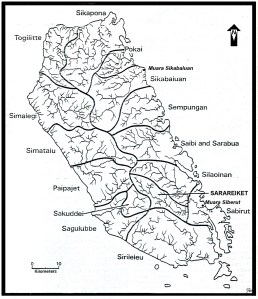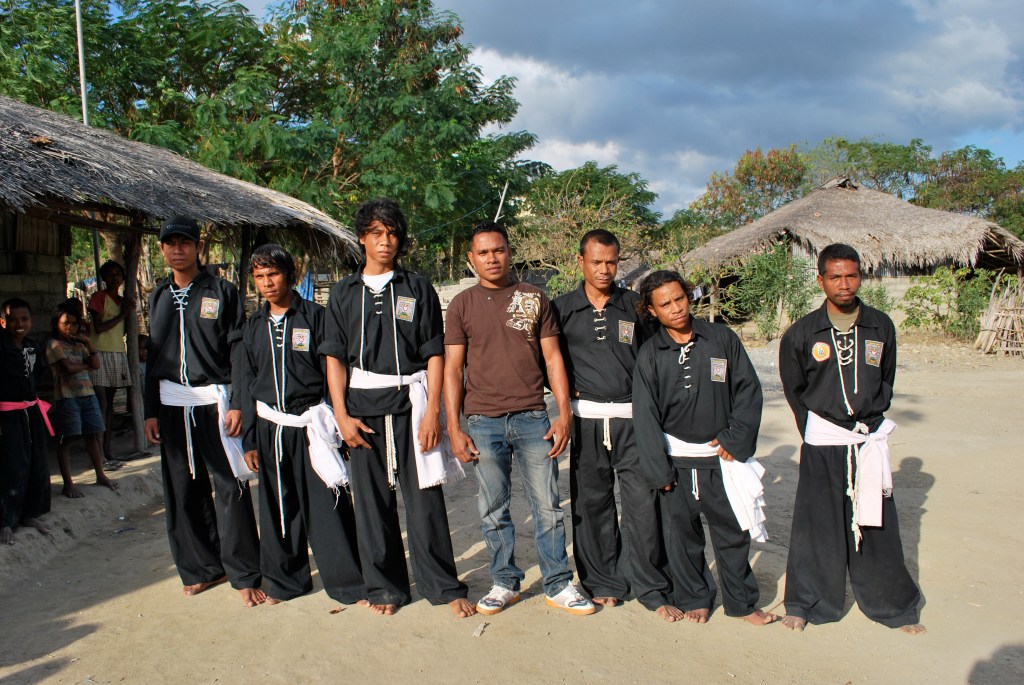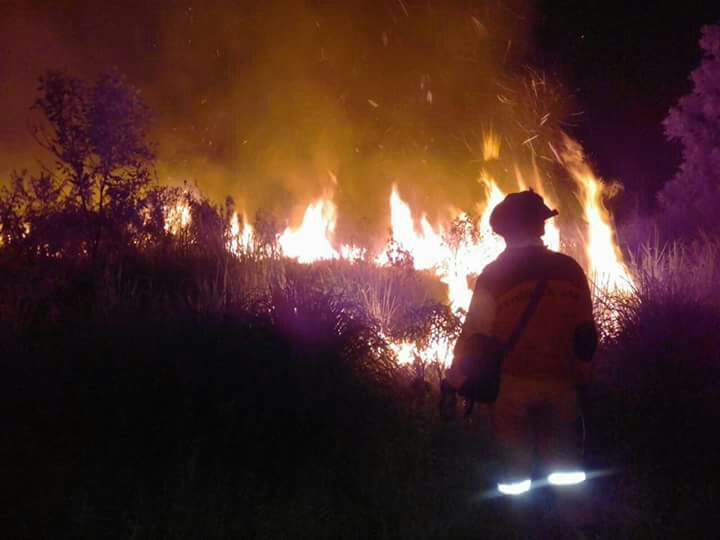Slippery challenging logs set end to end afforded the only way through this saturated secondary rainforest. Walking on the ground was like trying to walk in deep wet cement. While the logs tested one’s balanced there was some satisfaction in not falling into the slush. After a time I found it possible to move along with great ease, almost breaking into a jog, only to be startled when the ground suddenly disappeared and I found myself metres above a raging watercourse.
Environment
Siberut’s shales and marls had been worked by the equatorial conditions into sticky water retaining soils where rainforests thrived. Here the forest wasn’t a random collection of species climaxing and managing to survive an earlier clearing, it was an established equatorial garden, the sort that forest people create when they have lived in an area for hundreds of years.
Some would argue that the forests of Mentawai were undisturbed until recently but once people are present there can never be virgin rainforest. Beginning as far back 40 000 years ago a process of incremental transformation unfolded along the archipelago. Such sustainable change is all but invisible yet the very language and culture of the archipelago’s forest people is enmeshed and entwined in this process. Outwardly the illusion of the virgin forest remains yet the primal expression of culture is undeniable.
Colonial History
Somewhat isolated from the mainland of Sumatra since the end of the Pleistocene the Mentawai islands, of which Siberut is the largest, were not colonized by the Dutch until 1904. In this respect it was similar to Bali, but all similarities ended there. Pepper traders had attempted to establish plantations on the southernmost of the island chain in the 18th century. Later Malay, Sinhalese and Sumatran traders exchanged knives, cloth and beads for copra, rattan and timber.
Traditional economy
In Siberut this was sago based, supplemented by taro and bananas. Sago provides the largest yield of edible starch for the least effort, of any known plant. One day’s work yielded 17 days supply of sago. While it’s not the most nutritious of foods, it is 58% carbohydrate and contains 241 calories per 100g. [i]
Not living by sago alone, men hunted for pigs, deer and monkeys using arrows tipped with nerve poison. Women gathered a wide variety of edible green leafy plants, fruits, roots and herbs. They also netted small fish from countless watercourses and swamps. Chickens were ubiquitous.
While the lifestyle was simple there was mostly adequate nutrition. The relative ease of gaining food self-sufficiency allowed ample time for ceremonies most of which had primal links with the forest and hunting.
Population
As with all indigenous societies the people of Siberut had a strong attachment to their land. Over time some 15 linguistic regions emerged. Each language group tended to occupy a specific catchment and drainage system. Social life revolved around the clan house or uma, a solitary structure set high in the drainage system. In many ways the uma was similar to the lamin, the Dayak longhouse. It housed five to 15 patrilinealy related people. Where there were distinct families each maintained its own special space within the uma. [ii]
Population densities were low, barely 4 people per square kilometer, and while there was some inter-clan rivalry, life was relatively peaceful and the traditional economy sustainable. There was no tobacco, alcohol or betel nut.

The people
Traditional Mentawai people resemble many of the world’s forest people. They wear very little, just loin cloths for men and a type of lap-lap or skirt for women. Both men and women wear multiple strands of brightly coloured African beads traded into the area by the original pepper traders supplemented by amber coloured ceramic electrical insulators introduced by the Dutch and silver watch bands from cheap Chinese watches. All the adults we met were heavily tattooed with simple symmetrical patterns.
Women were often ministering to the needs of disproportionately large numbers of children. They were often breast-feeding. Their minimal attire made the signs of frequent pregnancy and childbirth most obvious. All had noticeable stretch marks and many were lactating. As a father I found their fertile femininity very beautiful.
In remote communities such as these people that have been to secondary school speak Indonesian well, even if they’ve only completed the middle school years. Others prefer to converse in their bahasa daerah or regional language.
The language
| Bahasa Rereiket [i] | Bahasa Indonesia | English |
| Sirimanua | Orang/manusia | Person/humans |
| Kai pa ubara | Datang dari mana | Where are you coming from? |
| Kai pa uee | Pergi ke mana | Where are you going |
| alepaat | terimakasih | thank you |
| meroken | biasa | usual |
The challenge of logging
Between 1990 and 2010 Indonesia lost 20.3% of its forest cover according to the Food and Agriculture Organization of the United Nations (FAO).
Forest includes natural forests and forest plantations. It is used to refer to land with a tree canopy cover of more than 10 per cent and area of more than 0.5 ha. Forests are determined both by the presence of trees and the absence of other predominant land uses. The actual figures are likely to be far more dire.
In a Guardian article of November 2010 “Illegal logging is a massive problem in Indonesia only because of weak law enforcement. But in the Mentawais, we are special. We have had the military, the police, district officials and port officials all involved in illegal logging,” according to Zuhi Saad, an environmentalist.
In the Mentawais strip-logging of the islands was a widespread problem, destroying biodiversity and reduciong valuable rivers to muddy sluices. Eventually environmentalists did win a concession which saw half of Siberut protected in a national park.
Palm oil concessions were granted to allow the land owners to “clear tracts” for plantations but there was only limited palm oil plantation development. Instead the loggers spot mined forests and moved on.
Cultural disruption
What the investigations did reveal was the truth of the statements attributed to Frans Siahaan, a director of rights group Yayasan Citra Mandiri in the Guardian newspaper article. Frans said, “Since the 70s there has been widespread cultural discrimination against the Mentawai. Their cultural symbols, traditional meeting houses and villages were burnt by the government when they were forced to relocate”.

Zuhi Saad also commented on this problem and his observations accorded experience so many years earlier in 1989. There was widespread discrimination against the Mentawai islanders and their uinique culture. People were fearful, particularly when they saw one of my travelling companions wearing a hat that was commonly worn by government officials. Reports of police destroying traditional tools and clothing were widespread and resettlement programs accompanied by attempts at Islamisation were common.
Ecotourism project
At the time of my visit we were attempting to develop a soft adventure tourism product based on the principles of ecotourism.
- establish operations that delivered benefits to local communities;
- discuss and analyse the impact of our program in the host community frequently de-briefing with service providers and community leaders after groups have visited them;
- develop inter-cultural awareness and respect amongst visitors and in the communities they encountered;
- emphasise ‘real life’ contact
- maximise cultural sustainability by minimising disruption to and encouraging respect for the local culture;
- encourage the participation of local people and local tourism operators in the process as guides, interpreters, accommodation providers;
- ensure that local food reserves were not depleted and where possible purchase food and other supplies locally;
- engage in non-exploitative relationships with residents and their communities; and,
- encourage respect for and avoid damaging the biophysical and the built environment.
We hoped might place the uniqueness and vulnerability of the Mentawai culture before the world. Unfortunately the absolute paucity of infrastructure put any thing other than small scale backpacker tourism beyond consideration.
[i] Spoken in Matatonan, Rokdok and Ugai and other locations along the catchment of the Rereiket River. The region is know as Sarareiket.
[i] Saving Siberut: A Conservation Master Plan. World Wildlife Fund Indonesia Program, For The Government of Indonesia. Bogor, February 1980. Page 66.
[ii] Nowadays Uma are less common in the eastern part of the island where logging has been most extensive. Here the process of change has seen people concentrated in various administrative villages.






Leave a comment